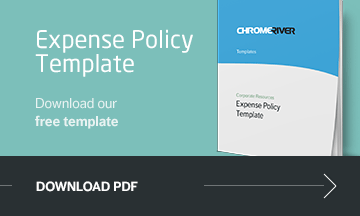 Anyone who has looked at some of the perks that companies offer will understand that any forward-thinking organization places a premium on attracting and retaining the best talent. When you factor that it costs an average of 6-9 months’ salary to replace an employee, spending a little extra to keep your team happy is a sound investment. The hard cost of employee turnover is, of course, just one issue here. Companies’ ability to thrive is reliant upon attracting and retaining the best talent. Being unable to keep and hire staff can have a seriously detrimental impact on an organization’s overall health.
Anyone who has looked at some of the perks that companies offer will understand that any forward-thinking organization places a premium on attracting and retaining the best talent. When you factor that it costs an average of 6-9 months’ salary to replace an employee, spending a little extra to keep your team happy is a sound investment. The hard cost of employee turnover is, of course, just one issue here. Companies’ ability to thrive is reliant upon attracting and retaining the best talent. Being unable to keep and hire staff can have a seriously detrimental impact on an organization’s overall health.
When it comes to travel expense policies and enforcement, many companies face the dilemma of keeping employees happy, without encouraging excess and unsustainable costs. Forcing your biggest revenue generator to stay in budget hotels may save you money in the short term, but when those rainmakers grow tired of your frugality, replacing them will be very costly. On the other hand, letting everyone fly first class and stay in five-star hotels may make your team love you, but your CFO won’t be so enthusiastic.
For your expense policy to be balanced with overall staff happiness, you need to use a considerable amount of judgment. It’s certainly critical that you minimize unnecessary spend, but at the same time, a policy which is too restrictive can be very short-sighted, with the potential long-term cost of having to replace your best staff.
My philosophy, both here at Chrome River, and what I advise our hundreds of customers round the world, is to cut waste, not cost. Smart planning and common sense can have a real impact on costs, without alienating staff. Here are some of the ways that you can delight your employees, while maintaining control of your T&E spend.
Balance cost versus staff happiness
Expense policies and preferred vendors are essential for cost control. However, having these policies too rigid and eliminating any leeway could alienate your staff. For example, if your preferred corporate airline is American, how do you work with your team members who have high status with United? If a comparable United ticket is just a few dollars more, let them book it. If it’s significantly more, maybe give them the option to pay the difference instead of outright blocking them from booking the ticket. The same holds true for hotel chains, car rentals and other vendors with similar programs. After all, your team is sacrificing time away from their family while away on business. Is it really worth saving a few bucks to stop them from getting reward points that they can use for themselves?
Support productivity
Your team is traveling to benefit your business, so give them the resources and support to be as productive as possible. If the cheapest flight of the day gets you in late at night, you could lose out, as tired travelers don’t perform at their best (especially if they’ve just flown coast to coast). Paying a couple of hundred dollars extra for a direct flight that gets in early enough for them to get plenty of rest before a big sales pitch or client meeting could have huge payback.
Paid Wi-Fi in hotel rooms is another area that can cause contention. While there’s no denying that charging anything up to $20 a day for Wi-Fi is somewhat of a rip-off, if it enables your team to be productive from their room while away on a trip, it’s better long-term than forcing everyone to head to Starbucks for their free Wi-Fi (especially when you know that they’ll expense that Venti Mocha Frappucino and blueberry muffin that they consumed). If Wi-Fi charges are starting to add up, it may be time to invest in personal hotspots for your team, enabling you to control and manage costs more effectively.
Remind, don’t reprimand
Most employees have the best interest of the company of heart, and given the opportunity, won’t try to waste resources. Treating them like children with restrictive policies, or punishing them for occasional out of policy spend won’t help to foster a feeling of trust.
If you use an expense management automation solution, it’s easy to analyze expense spend in from cost center to cost center, and even down to an individual level. You can see if employees are being wasteful in their expense spending, not using preferred vendors, choosing unnecessarily expensive flights, and so on. This data allows you to alert them of their spending patterns, show how they stack up to others, and then provide guidance to minimize waste. For example, some solutions have expense analytics capabilities that allow you to see how spend compares for comparable employees. You can build a bell curve of spend by category to find the outliers – people who are multiple standard deviations from the mean. If they are spending excessively, give them the chance to provide rationale.
As I mentioned before, the vast majority of your team have the best interests of the organization in mind, and it’s likely that the spend is completely justified. If not, showing the individual how their spend compares to others is usually enough encouragement for them to keep a closer eye on things.
Subscribe
Latest Posts
Posts by Category
I just love the Chrome River application. I could probably sell it! Finance Administrative Coordinator Law Firm, 800 Employees
Can’t we just move year-end, so that we can roll out Chrome River sooner!? Financial Systems Director Law Firm, 300 Employees


Comments